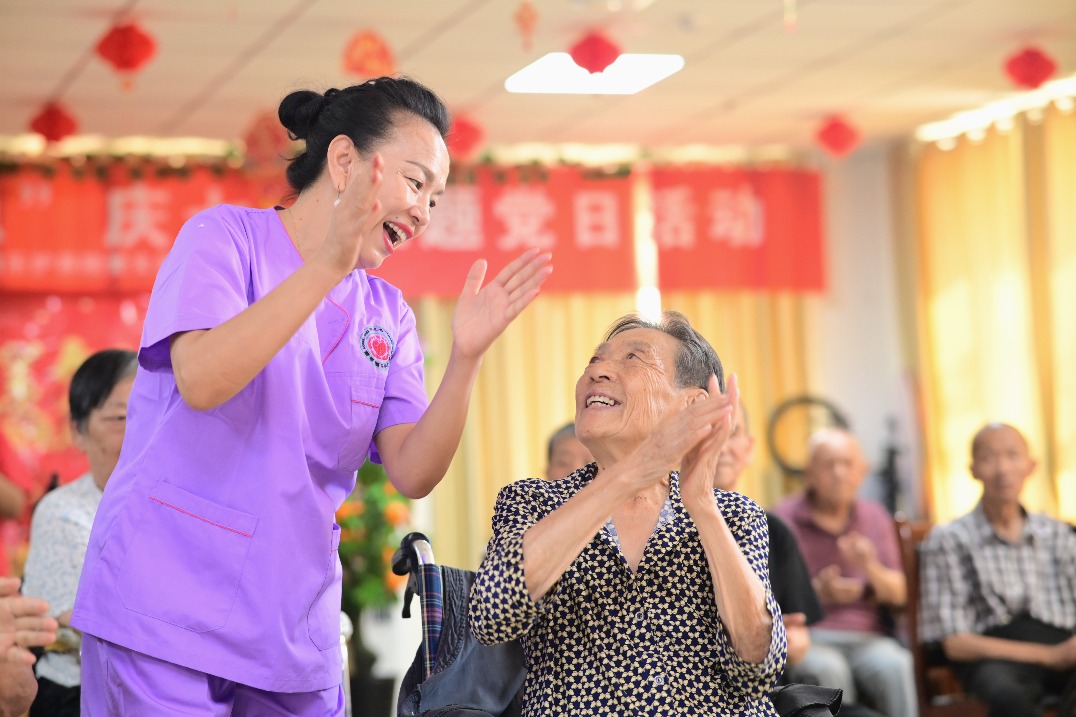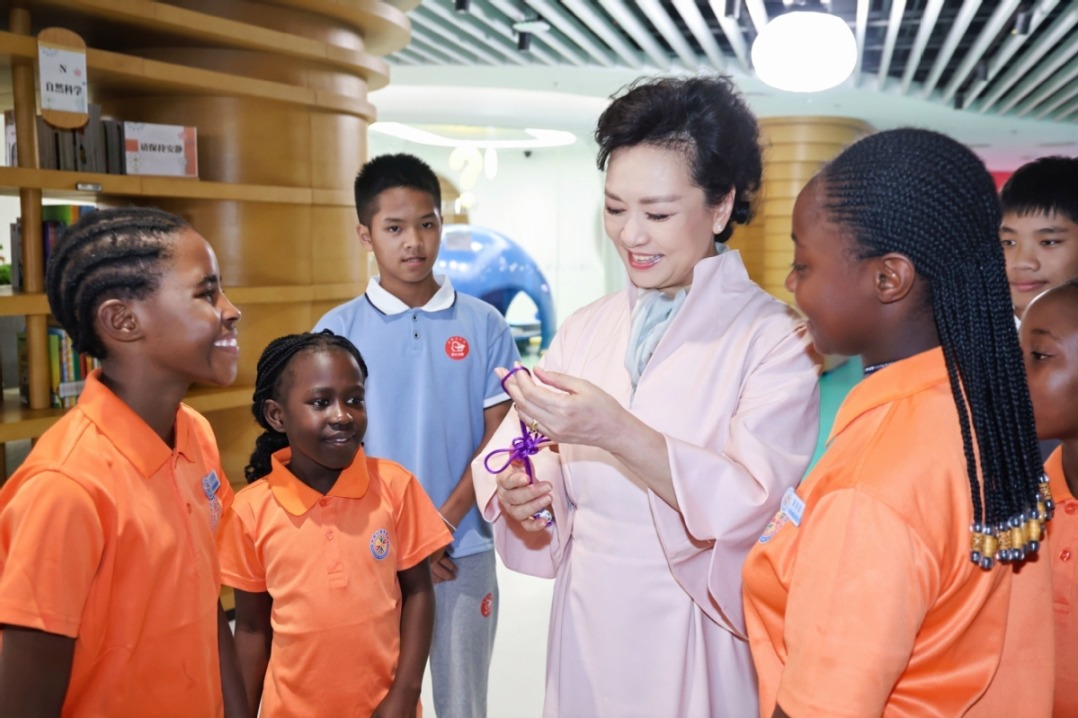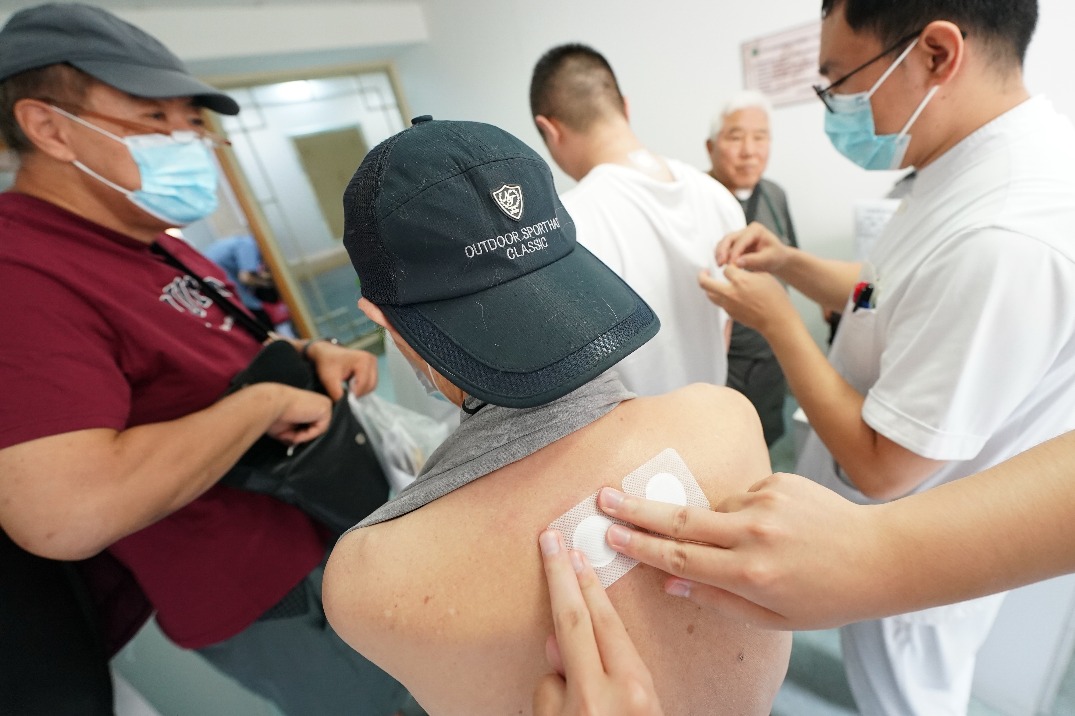China needs efforts to boost demand, market expectations
China Daily | Updated: 2024-07-22 09:24

The recovery momentum of the Chinese economy remained unchanged in May. Though there have been some less-than-ideal indicators, it has not altered the fact that the country's economy remains resilient. Currently, the recovery is progressing steadily.
Given the pressure from both internal and external demand as well as internal structural adjustments, the country currently lacks the foundation for sustained and rapid economic development.
However, the steady march of the economy (with minor fluctuations) aligns with basic economic rules and is beneficial for China's development, both in the short term as well as long term.
In May, industrial output slowed to 5.6 percent year-on-year, with the manufacturing sector also slackening a bit, although the sector plays a critical role in driving industrial production.
The high-tech industry presented a mixed picture during the period. Industrial output of the high-tech industry grew 10 percent year-on-year, or 1.3 percentage points lower than the previous level but still maintaining a relatively high growth rate.
Consumption rebounded, with rapid growth in upgraded products, while the price index was generally stable with a slight decline, reflecting weak domestic demand. The employment situation was generally stable, with the urban surveyed unemployment rate falling year-on-year.
Government bonds have supported the recovery of growth in social financing. Manufacturing PMI also fell, with production stronger than demand in May.
Based on the above data, it can be seen that insufficient demand and low expectations continue to be the major factors affecting the development of China's macroeconomy.
Therefore, the following analysis can be done based on the country's three main economic drivers.
To begin with, in terms of fixed-asset investment, manufacturing is expected to continue supporting investment, considering the month-on-month rise and the narrowing of the year-on-year decline of the Producer Price Index, or PPI, as well as the increased industrial output in April.
A significant reason for the poor performance of infrastructure investment in June is the slow issuance progress of special bonds from January to May, with only 1.15 trillion yuan ($158.2 billion) issued, accounting for just 30 percent of the annual limit.
Thus, accelerated issuance of these bonds and the issuance of some ultra-long-term special treasury bonds are expected to boost infrastructure investment. Targeted real estate policies have also been introduced across various regions to slow the decline in the real estate industry.
However, stabilizing prices and volumes of new homes is crucial to boost domestic demand and resolve real estate issues. Currently, sales of secondhand homes are better than sales of new ones. To address this problem, the government may need to take more direct action.
For example, the People's Bank of China, the country's central bank, has announced a 300 billion yuan ($41 billion) relending facility for affordable housing, encouraging financial institutions to support local State-owned enterprises in purchasing unsold properties for affordable housing. This is expected to leverage 500 billion yuan in bank loans. The market also widely expects the central bank to further expand the relending scale.
Second, in terms of consumption, while consumer willingness has increased, their confidence and expectation indexes for income and employment have shown a downward trend. Since employment and income are fundamental factors influencing long-term consumption trends, stabilizing employment and further optimizing income distribution are crucial.
Policies are also expected to marginally improve the real estate industry, promoting growth in consumption. For example, action plans on equipment upgrades in seven major areas, replacement of old consumer goods and recycling have all been released.
Third, in terms of trade, export growth is showing an upward trend, as the progression of the US inventory cycle presents opportunities for Chinese exports. The United States is at the end of an inventory cycle that began in August 2020 and is about to enter a new active replenishment phase.
The resilience of the US and European economies also helps drive Chinese exports. The US Manufacturing PMI is expanding, and the eurozone PMI has recovered within the contraction zone, creating opportunities for Chinese exports in sectors such as transportation equipment, specialized equipment, instrumentation and furniture manufacturing.
However, exports also face unfavorable factors. European countries and the US have simultaneously promoted manufacturing reshoring and nearshoring during their restocking periods.
The resurgence of protectionism and increased political interference are becoming more pronounced, with the additional tariffs imposed by the US and the EU on China being the most direct example. The PMI index for new export orders fell in May, indicating that unfavorable factors are already pressuring exports.
In terms of imports, the implementation of special bonds and special treasury bonds is expected to generate physical work volumes, driving demand for related commodities. If domestic demand remains weak, future high-level meetings are likely to introduce further policies to expand domestic demand.
Based on the above analysis, these are our suggestions for future policies.
In the short term, the core of macroeconomic policy is to strengthen countercyclical and cross-cyclical adjustments. Specifically, fiscal and monetary policies can be improved and adjusted in the following areas.
Fiscal policy should maintain a necessary deficit level while reserving space for increased efforts, balancing the tasks of stabilizing growth and preventing risks. From the perspective of the relationship between economic growth and risks, achieving economic growth helps resolve existing risks.
Therefore, if weak demand and low expectations persist, it may be necessary to consider increasing the fiscal deficit rate in advance to guide expectations.
Policy tools, to start with, should focus on increasing budgetary investment. China is in a stage of rapid development in new industrialization, informatization, urbanization and agricultural modernization, providing significant investment opportunities.
Second, the issuance of special bonds has slowed this year, with fiscal efforts being delayed. Hence, it is crucial to accelerate the pace of bond issuance.
Third, instead of increasing tax reductions and fee cuts, the focus should return to structural tax cuts.
Fourth, it is important to prioritize essential financial safeguards in fiscal expenditure to ensure basic public services, salary payments and institutional operations.
China has maintained a relatively loose monetary policy in recent years, but effects have been smaller than expected. The core reason is not because of the insufficiency of "quantity" but the inefficiency of the transmission mechanism.
Low expected investment returns lead to low expectations, causing ample liquidity to be insufficiently converted into investment and consumption, and instead being saved by residents and enterprises.
Therefore, the short-term focus of monetary policy should be on promoting the transition from "loose money" to "loose credit".
More efforts should also be made to increase the countercyclical adjustment of monetary policy, through the use of various currency tools such as open market operations, medium-term lending facilities, relending and rediscounting, and reserve requirements to provide strong support for the reasonable growth of social financing and monetary credit.
We should also fully utilize the space for lowering reserve requirements and interest rates. The current priority should be to maintain price stability and promote a moderate rise in prices as a key consideration for monetary policy, aiming to bring nominal economic growth back above real economic growth.
This involves increasing the supply of medium- and long-term loans and lowering financing thresholds for small and micro-sized enterprises.
Additionally, we should utilize targeted control tools to enhance the precision of countercyclical adjustments in monetary policy and continue to stabilize the real estate market.
Over the long term, the country needs to streamline the central and local fiscal relationships by establishing a system that matches financial powers with administrative responsibilities, and improve the public debt management system to continuously and effectively prevent and mitigate risks in key areas.
Further, developing new quality productive forces will be the determining factor for China's future economic development. Therefore, in the long term, it is essential to significantly increase support for the development of such forces.
This article is an excerpt from the China Macroeconomy Forum's monthly analysis and forecast report on China's macroeconomy. CMF is a Beijing-based think tank.
The views don't necessarily reflect those of China Daily.
























